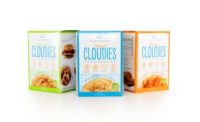
Sugar-Free
|
Estimated U.S. Retail Market Size
$94.5 million
Sugar-Free Chocolate*
$84.5 million
Sugar-Free Non-Chocolate* *In food, drug and mass merchandisers, excluding Wal-Mart Source: Information Resources, Inc. |
Category Climate
During the height of the low-carb years in 2003 and
2004, sugar-free chocolate confectionery had a major following. That
sub-segment growth has slowed, and the current sugar-free trend favors
non-chocolate. According to a recent report from Mintel, sales of
sugar-free non-chocolate candies are moving at a pace “considerably
faster” than their chocolate counterparts. For 2007, Information
Resources, Inc. recorded dollar sales gains for non-chocolate sugar-free
candy at nearly 4 percent across food, drug and mass channels, excluding
Wal-Mart. Sugar-free chocolate, on the other hand, experienced more than a
9 percent decrease in dollar sales.
Mintel points to rapid increases in the incidence of
Type II diabetes as the major driver behind the sugar-free, non-chocolate
growth, particularly in hard candy. Sugar-free non-chocolate candy
(including gum) has also been a platform for delivering functional
ingredients such as vitamins, antioxidants and calcium into the diet.
Product Innovation
Developments in sugar-free candy continue to revolve
around new sugar substitutes and combinations to come up with the
“sweetest” and “healthiest” versions. Major candy
manufacturers, as well as private label producers, have been rolling out
sugar-free versions of their established brands.
Target Audience
Diabetics and overweight consumers are the logical
target audience, and both conditions are prevalent among the general
population.
According to the National Diabetes Information
Clearinghouse, 20.8 million children and adults in the United States in
2005 had some form of diabetes. Preliminary figures from the “2006
National Health Interview Survey” suggest these numbers may be even
higher. Additionally, the Centers for Disease Control (CDC) predicts that
one in three Americans born in 2000 will develop diabetes. Mintel’s
exclusive research shows diabetes influencing the purchase decisions of
more than a third of respondents: 34% of those purchasing sugar-free
products for themselves do so for a diabetes-related reason, as do 39% who
purchase sugar-free items for another household member.
More Americans are overweight or obese than at any
other time in the nation’s history. According to the 2003-2004
“National Health and Nutrition Examination Survey” undertaken
by the CDC, 66.3% of U.S. adults ages 20 or older are overweight or obese.
According to Mintel’s exclusive research, 29% of respondents are
extremely or very interested in sugar-free or low-sugar products as a form
of diet plan.
Retailing/Merchandising
Research shows that best-practice retailers are
establishing a sugar-free section within the regular candy department. More
retailers are creating whimsical departments and boutique-within-a-store
approaches. Drug stores have an opportunity to promote the category, in
conjunction with health and wellness platforms.
Outlook
Sugar-free brands are expected to position themselves
as tools for the diabetic community, especially as Baby Boomers age. The
fusion of sugar-free confectionery and added benefits is likely to
continue. Mintel expects diet blogs and Internet chats to help grow the
industry. Meanwhile, sweetener innovations, including natural and organic
options, will give rise to product advances.
Quick Bites
Non-chocolate has
traded places with chocolate as the sugar-free favorite.
Diabetics and overweight consumers will drive purchases.
Choice will increase from major brands and private label alike.
There’s more retail whimsy in carved-out category sections.
Diabetics and overweight consumers will drive purchases.
Choice will increase from major brands and private label alike.
There’s more retail whimsy in carved-out category sections.


